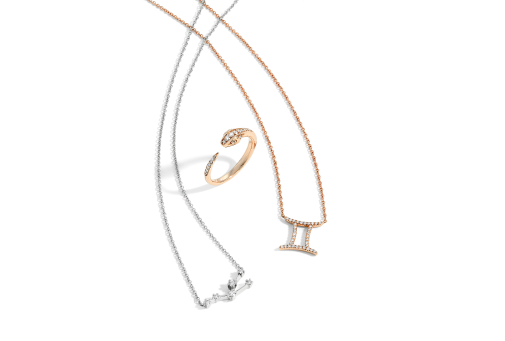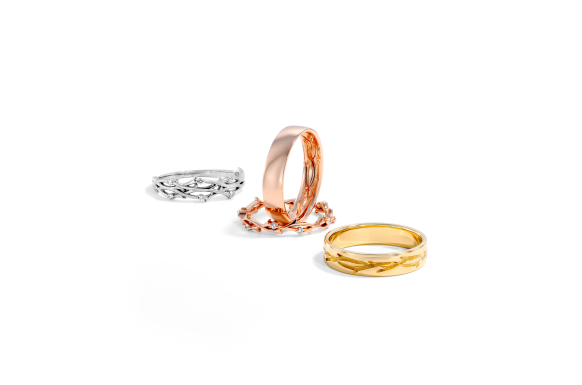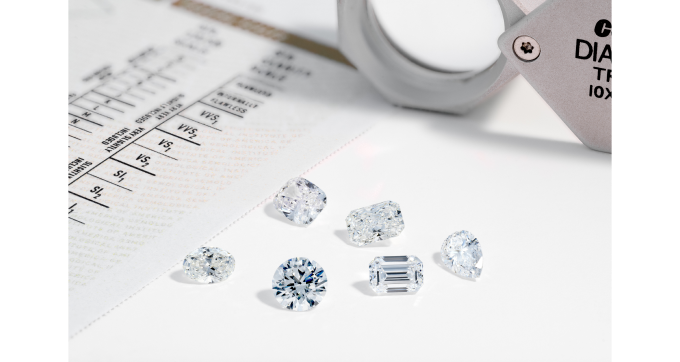Engagement rings are a significant investment. According to The Knot's 2023 Jewelry and Engagement Study, the average cost of an engagement ring is currently about $5,500. This aligns with the traditional "three months' salary" rule, which suggests that you should spend roughly a quarter of your annual income on this meaningful purchase.
However, there are always exceptions that highlight the importance of knowing what you're buying. One bride named Lydia recently discovered that her cherished ring was worth a mere $30 because it was fake!
According to Brides, Lydia’s sister-in-law Katie, a jeweler, was cleaning the ring as a favor when she noticed something strange. The groom had bragged about how he spent $50,000 on the piece, but upon cleaning it, Katie determined that the ring was made of cheap materials and worth no more than $30. As you can imagine, this didn’t go over well with the bride. She ended up calling off the engagement after her fiancé admitted he knew the ring was cheap and was hoping she wouldn’t find out.
The moral of the story? Fake engagement rings are out there, and some of them look so genuine that only an experienced jeweler can tell the difference. Here are some tips to help you recognize and avoid mock engagement rings, ensuring your proposal goes off without a hitch and with all the sparkle you’ve dreamed of.
Rule #1: Do Your Research
Knowledge is power! Before you start shopping for an engagement ring, it's crucial to educate yourself about diamonds and the factors that influence their value and appearance.
First, there are different types of diamonds to consider. Natural diamonds are formed over millions of years beneath the Earth's surface, while lab-grown diamonds are created in controlled environments to have the same physical, chemical, and optical properties as natural diamonds.
Both types have their unique advantages, with natural diamonds being rare and traditional, and lab-grown diamonds offering a more sustainable and often more affordable option. Lab-grown diamonds typically cost 40-50% less than natural diamonds of comparable quality, making them an attractive choice for budget-conscious buyers without sacrificing beauty or durability.
Understanding the four Cs of diamonds— carat, cut, clarity, and color—is also essential:
-
Carat: Carat weight measures the diamond's mass, not its size as many people might assume. This unit of measurement is specifically used for defining the weight of a gemstone. While larger diamonds are rarer and generally more expensive, carat weight should be considered alongside the other three Cs to determine a diamond's overall value and appeal.
-
Cut: This refers to how well the diamond has been shaped and faceted. The cut affects a diamond's brilliance and sparkle. Common cuts include round, princess, emerald, and oval, among others. A well-cut diamond will reflect light beautifully, making it appear more luminous.
-
Clarity: This assesses the presence of internal inclusions or external blemishes. The clarity grade ranges from F (Flawless - no inclusions or blemishes visible under 10x magnification) to I (Included - inclusions and/or blemishes visible to the naked eye). Higher clarity typically means a higher value, but many inclusions are microscopic and do not affect the diamond's appearance to an untrained eye.
- Color: This grades the diamond's lack of color, with the purest and most valuable diamonds being completely colorless. The grading scale ranges from D (colorless) to Z (light yellow or brown). Diamonds with less color tend to have a higher value.
It’s also important to understand the common metals used in engagement rings, such as yellow gold, rose gold, white gold, and platinum. Yellow gold is classic and rich in color, rose gold offers a romantic and vintage feel, white gold provides a sleek and modern look, and platinum is known for its strength and hypoallergenic properties.
The more you know about these aspects, the less likely you are to be deceived by a fake engagement ring. Empower yourself with knowledge to make a confident and informed choice.
Rule #2: Buy from Reputable Sellers
One of the best ways to avoid fake engagement rings is to buy from reputable, well-known jewelers. Established stores often have a reputation to maintain, making it less likely that they will sell fake or low-quality rings. Look for jewelers who have positive reviews and ratings, and check for certifications from reputable organizations.
At Keyzar, we transform engagement ring shopping into a delightful and memorable experience. Our goal is to bring joy and simplicity to the process with our chic, contemporary designs. Our user-friendly website makes finding the perfect ring a breeze, and our commitment to customer satisfaction shines through every step. We also take pride in our sustainable practices, using eco-friendly materials and cutting-edge technologies to craft each made-to-order piece with care.
Keyzar is more than just a jewelry brand; we're here to help you celebrate life’s most precious moments with elegance and style. Join us, and discover why so many trust Keyzar for their engagement rings.
Rule #3: Request a Certificate of Authenticity
Always ask for a certificate of authenticity when purchasing a diamond engagement ring. This certificate provides detailed information about the diamond’s characteristics, including its carat weight, cut, clarity, and colour.
Reputable certification comes from organizations like the Gemological Institute of America (GIA) and the International Gemological Institute (IGI). These institutions carefully assess diamonds based on the four Cs and document the results in a detailed report. This diamond certificate, which can be provided in a digital or printed format, certifies the diamond’s quality and authenticity.
At Keyzar, we provide comprehensive certification for both the ring and the diamond. All our natural and lab-grown diamonds are certified by the GIA and IGI, ensuring that you receive accurate and reliable documentation. In addition to the diamond certificate, we include a Keyzar Jewelry Appraisal with your purchase. This ensures you have all the necessary documentation to confirm the authenticity and quality of your purchase.
Rule #4: Inspect the Ring Carefully
Even if you’re not an expert, there are some simple checks you can do to verify a ring’s authenticity. Use a magnifying glass to inspect the stone for any imperfections or inclusions. Real diamonds usually have tiny flaws, while the ones on mock engagement rings often look too perfect.
When selecting an engagement ring, it's also important to check the ring's metal for stamps indicating its purity and authenticity. Each ring typically has a stamp that signifies the metal type and its quality.
For example:
-
Gold: Gold rings are often stamped with "14K" or "18K," where "K" stands for karat, a measure of the gold's purity. 14K gold is 58.5% pure, while 18K gold is 75% pure. The higher the karat, the more gold content in the ring.
- Platinum: Platinum rings are usually marked with "PT", “PLT”, or "PLAT," often followed by a number indicating the percentage of platinum in the alloy.
These stamps are typically found on the inside of the ring band. If you’re unsure about the stamp or the ring’s authenticity, don’t hesitate to seek a second opinion from a trusted jeweler.
Rule #5: Be Wary of Deals That Seem Too Good to Be True
If a deal seems too good to be true, it probably is. Be cautious of sellers offering significant discounts or unusually low prices on what they claim to be high-quality engagement rings. While everyone loves a bargain, it’s important to prioritize authenticity and quality over price.
At Keyzar, we pride ourselves on our transparency and commitment to quality. Our customers’ trust is paramount, and we provide all necessary documentation to verify the authenticity and quality of our jewelry. An engagement ring is more than just a piece of jewelry; it’s a once-in-a-lifetime purchase that holds deep sentimental value. Choosing a certified diamond guarantees that your ring is not only beautiful but also a true representation of your enduring promise.
Rule #6: Trust Your Instincts
Finally, trust your instincts. If something doesn’t feel right about the purchase, take a step back and reassess the situation. Your intuition can be a valuable tool in helping you steer clear of fake engagement rings and make a wise decision. It’s better to take your time and ensure you’re getting a genuine ring than rush into a purchase you might regret later.
At Keyzar, we’re confident that you’ll love any ring you purchase from us, but should that not be the case, we offer a 30-day money back guarantee. Shop now knowing that your satisfaction is our top priority.






